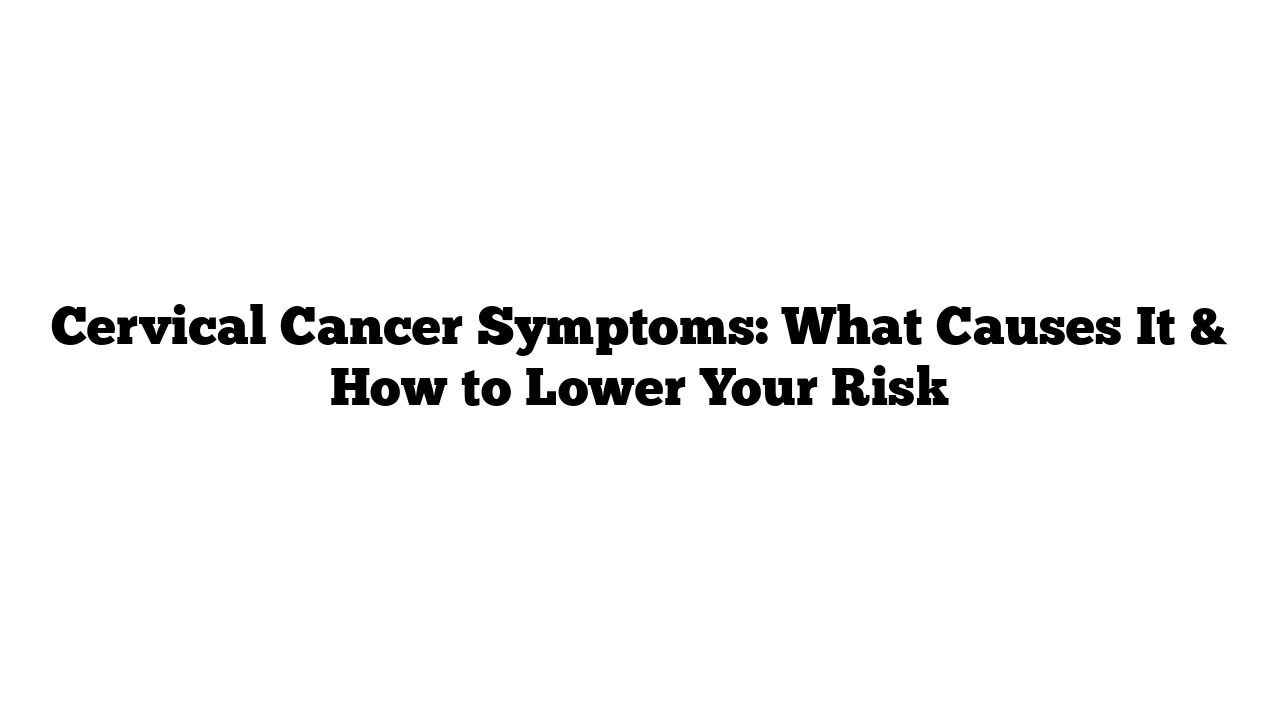Cervical cancer is a significant health issue that every woman should be aware of. It is essential to understand its symptoms, causes, and risk factors to take steps toward prevention. In this article, we’ll discuss what cervical cancer is, how it develops, and what you can do to lower your risk.
What is Cervical Cancer?
Cervical cancer originates in the cervix, the small structure that connects the uterus (womb) to the vagina. It has a tiny hole that allows menstrual blood to flow and sperm to enter during reproduction. Cervical cancer occurs when abnormal cells in the cervix grow uncontrollably, potentially invading surrounding organs like the bladder, intestines, and even spreading throughout the body.
Cervical Cancer Symptoms
The symptoms of cervical cancer are not always noticeable, particularly in the early stages. Here are some signs to be aware of:
- Abnormal Vaginal Bleeding: Bleeding between periods, after intercourse, or post-menopause can be a red flag.
- Pain During Sex: Discomfort or pain during sexual intercourse may indicate an issue with the cervix.
- Chronic Pelvic Pain: Unexplained pelvic pain can be a symptom of advanced cervical cancer.
- Blood-Stained Discharge: Unusual discharge with blood can signal cancer.
- Advanced Symptoms: If cervical cancer spreads, it may cause symptoms related to other organs, like kidney failure or severe vaginal bleeding.
What Causes Cervical Cancer?
The most common cause of cervical cancer is Human Papillomavirus (HPV). HPV is a group of more than 100 related viruses, many of which are sexually transmitted. It is estimated that 80% of sexually active people will be infected with HPV at some point in their lives. About 99.7% of cervical cancer cases are linked to HPV infection.
HPV Risk Factors
Several factors increase the likelihood of contracting HPV and, consequently, developing cervical cancer:
- Unprotected Sex: Having unprotected oral, anal, or vaginal sex increases the risk of contracting HPV.
- Multiple Sexual Partners: The more sexual partners you have, the higher your risk.
- Early Sexual Activity: Starting sexual activity at a younger age increases the risk.
- Immunocompromised Individuals: People with weakened immune systems, such as those living with HIV or on immunosuppressive medications, are at a greater risk.
How to Reduce Your Risk of Cervical Cancer
There are several preventive measures that can significantly lower your risk of cervical cancer:
- Practice Safe Sex: Using condoms and limiting the number of sexual partners can reduce HPV exposure.
- Regular Cervical Cancer Screening: Participate in your country’s cervical cancer screening programs. Regular pap smears or HPV tests can detect early signs of cervical cancer.
- HPV Vaccination: Getting the HPV vaccine is an effective preventive measure. It protects against the strains of HPV most commonly associated with cervical cancer.
- Quit Smoking: Smoking increases your risk of cervical cancer, so quitting can lower your chances of developing the disease.
- Healthy Lifestyle: Maintaining a balanced diet and exercising regularly can help boost your immune system, reducing the risk of cervical cancer.
Conclusion
Understanding cervical cancer, its symptoms, and the role of HPV in its development is crucial for prevention. Regular screenings, vaccination, and a healthy lifestyle are key to reducing your risk. As both men and women can be affected by the implications of cervical cancer, it is vital to raise awareness and take preventative action.
For more information on cervical cancer and prevention strategies, visit medicaltimes.io.
FAQs:
- Can men get HPV? Yes, men can contract and spread HPV. While HPV primarily affects women in terms of cervical cancer, men can get genital warts and, in some cases, penile cancer.
- Is HPV common? Yes, HPV is one of the most common sexually transmitted infections worldwide.
- How often should women get screened for cervical cancer? It’s recommended that women get a Pap smear every 3 years starting at age 21, or an HPV test every 5 years for women over 30.
- Can cervical cancer be cured? Yes, cervical cancer is highly treatable if caught early. Treatment may involve surgery, chemotherapy, or radiation.
